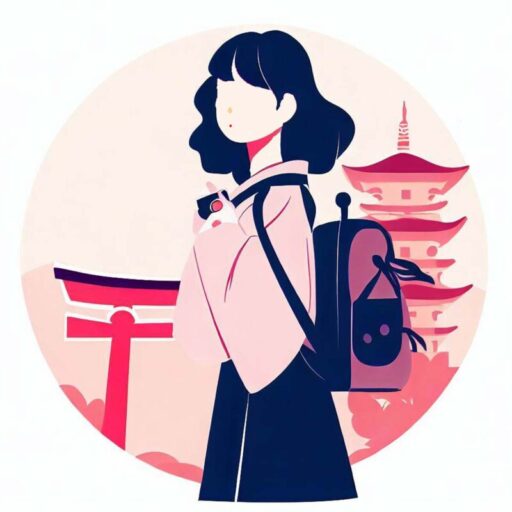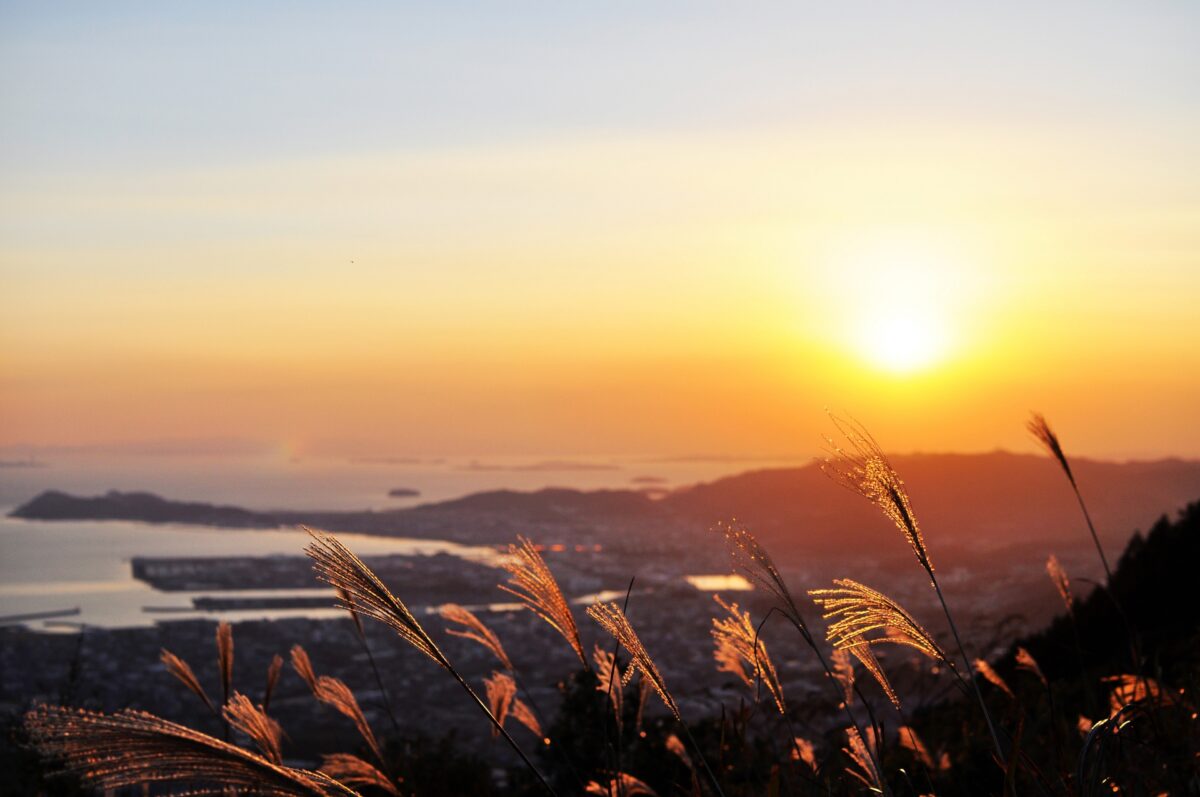Discover the Charm of the Autumn Equinox! The Deep History and Meaning of Japan’s Forty Seasonal Divisions and Regional Customs.

『 This article is… 』
This page delves deeply into the traditions and contemporary meanings of Japan’s Autumn Equinox Day. From Nara’s Mandala Offerings to family meals in Kyushu, it introduces unique customs from various regions. Ideal for those interested in culture and eager to learn about Japanese traditions. Reading this article offers an understanding of Japan’s rich cultural heritage and regional diversity, providing deep insights.
Hello everyone! I’m Kasumi, a travel web writer. Each of Japan’s four seasons has its unique beauty and culture, but autumn, in particular, is a moving season. Today, centered around the Autumn Equinox Day, I will share with you about Japan’s forty seasonal divisions and their customs, interspersed with my travel experiences. We will explore the traditions that have continued from ancient times, the Autumn Equinox customs that vary by region, their history and origins, and their meaning and characteristics in modern times. Through my eyes, as someone who has traveled all over Japan, let’s together delve into the profound charm of the Autumn Equinox!
- The Meaning and Origin of the Autumn Equinox
- Traditional Customs and Modern Changes of Japan’s Autumn Equinox
- The Relationship Between the Autumn Equinox and Japanese Views of Nature
- The Autumn Equinox and Japanese Culture & Arts
- The Significance of the Autumn Equinox Day in Modern Japanese Society
- Summary and Reflections
- Kasumi Points
The Meaning and Origin of the Autumn Equinox
What is the Autumn Equinox?
The Autumn Equinox is a special period when the sun rises directly in the east and sets in the west, resulting in nearly equal lengths of day and night. It is one of the forty seasonal divisions based on the solar calendar and occurs in Japan between September 22nd and 24th each year. This day has deep ties with nature and human life, giving rise to various customs since ancient times.
Historical Background
In my travels across Japan, I felt that the Autumn Equinox Day is not just a natural phenomenon but deeply intertwined with culture and beliefs. In ancient Japan, it marked the end of farming work and a time to give thanks for the harvest. It was also considered a significant day to honor ancestors and strengthen family bonds, thus holding a special meaning for the Japanese people.
The Origin of the Autumn Equinox
The origin of the Autumn Equinox is a natural phenomenon based on the position of the sun, influenced by the ancient Chinese theory of Yin and Yang and the Five Elements. In Japan, this concept was adopted, and the Autumn Equinox became known as the time when ‘Yin’ overtakes ‘Yang’, symbolizing a balance in the natural world.
The Autumn Equinox in Modern Times
Today, the Autumn Equinox is a public holiday, also known as the middle day of Higan, when many people visit graves. This tradition varies by region, as I witnessed during my travels across Japan. For example, in Kyoto, special Higan markets are set up, selling local ingredients and traditional crafts. Thus, the Autumn Equinox Day has retained its ancient significance while fostering unique local customs.
Traditional Customs and Modern Changes of Japan’s Autumn Equinox
Regional Customs of the Autumn Equinox
Japan has cultivated various Autumn Equinox customs throughout its long history. For example, in the Tohoku region, a ‘New Grain Thanksgiving’ ceremony is held on this day to offer new rice to the gods, expressing gratitude for a bountiful harvest. In Kyushu, there is a tradition of families gathering and sharing special meals. These customs reflect the rich culture and history of each region.
The Autumn Equinox and Food Culture
On the Autumn Equinox Day, enjoying special foods is also a tradition. For instance, Japanese sweets made with chestnuts and sweet potatoes, representative of autumn flavors, are commonly seen at tea ceremonies during this period. Sharing dishes made with seasonal ingredients with family is a cherished aspect of the Autumn Equinox Day.
Changes in Modern Autumn Equinox Customs
In modern times, new customs have emerged in addition to traditional ones. For example, more families are taking short trips during the Autumn Equinox Day. Also, cultural events and art exhibitions aligned with the Autumn Equinox have gained popularity in urban areas, indicating a diversification in how the day is celebrated, reflecting changes in Japanese lifestyles.
Regional Autumn Equinox Events
Noteworthy are the events held across the country during the Autumn Equinox. In Nara, for instance, the traditional Mandala Offering ceremony takes place, attracting locals and tourists alike. In Tokyo, various art festivals and music events are held, establishing new ways to enjoy autumn.
These customs and events demonstrate that the Autumn Equinox Day in Japan transcends natural phenomena, deepening cultural and community bonds.
The Relationship Between the Autumn Equinox and Japanese Views of Nature
The Autumn Equinox and Japanese Nature Views
The Autumn Equinox Day shows a deep connection with Japanese nature. The Japanese have always been sensitive to natural phenomena, integrating the changes in nature into their culture and daily life. The Autumn Equinox, marking the transition from summer to autumn, is deeply rooted in Japanese culture that values harmony with nature.
The Autumn Equinox and the Change of Seasons
The Autumn Equinox, a time when day and night are almost equal in length throughout the year, marks the beginning of shorter days. This was a crucial indicator for planning life and agricultural work in line with nature’s rhythm in ancient, agrarian Japan. It also signified the start of the autumn harvest, closely linked to the Japanese view of nature.
Coexistence with Nature
The Japanese value coexistence with nature. On the Autumn Equinox Day, festivals and events are held to express gratitude and respect for nature, showing that living in harmony with nature is fundamental to Japanese culture. In my travels, I saw many people who love and cherish nature, sensitively responding to seasonal changes by incorporating them into their lives and celebrating them.
The Autumn Equinox Day and Environmental Awareness
With growing concerns about environmental issues, the Autumn Equinox Day has become an opportunity to raise awareness about nature. Activities such as tree planting and local clean-up campaigns are organized around this time, demonstrating how traditional Japanese views of nature are integrating with modern environmental consciousness.
The Autumn Equinox Day: A Time to Feel the Transition of Japan’s Four Seasons and Consider Harmony with Nature
The Autumn Equinox Day allows us to renew our respect and gratitude towards nature.
The Autumn Equinox and Japanese Culture & Arts
Cultural Expressions Inspired by the Autumn Equinox
The Autumn Equinox has greatly influenced Japanese culture and arts. During this period, the rich colors and emotions of nature are reflected in poetry, paintings, music, and even performing arts. For example, waka and haiku themed around autumn leaves are cultural expressions symbolizing Japanese autumn. At an old temple in Kyoto I visited, a special autumn leaf viewing event was held around the Autumn Equinox, featuring literary and poetry readings amid nature’s beauty.
Art Events Celebrating the Autumn Equinox
Art events and exhibitions aligned with the Autumn Equinox are held nationwide, showcasing regional traditions and contemporary art against the backdrop of autumn’s richness. In museums in Tokyo and Osaka, special exhibitions related to the Autumn Equinox attract many visitors, offering unique experiences where Japanese culture and nature converge.
The Autumn Equinox and Traditional Events
Traditional events and festivals are held across Japan on the Autumn Equinox Day, celebrating the harvest and expressing gratitude to nature. For example, the traditional ‘Moon Viewing’ event is held, where people appreciate the beauty of the moon. This event, involving offerings like moon-viewing dumplings and gazing at the moon’s phases, symbolizes the ambiance of a Japanese autumn night.
The Autumn Equinox and Traditional Japanese Performing Arts
The Autumn Equinox also influences traditional Japanese performing arts. Noh and Kabuki, among other arts, feature numerous works themed around the Autumn Equinox. These works depict autumn scenes and emotions uniquely, allowing audiences to feel the changing seasons. Watching these traditional arts during the Autumn Equinox is a valuable opportunity for deeper understanding of Japanese autumn.
The Autumn Equinox Day is a special time when Japanese nature, culture, and arts intersect. Expressing and sharing the unique emotions and beauty of this season through culture and arts allows us to pass on Japan’s rich cultural heritage to future generations.
The Significance of the Autumn Equinox Day in Modern Japanese Society
The Contemporary Role of the Autumn Equinox Day
The Autumn Equinox Day plays an important role in modern Japanese society. It provides a chance to step away from the bustle of everyday life, connect with nature, and reflect on family and ancestors. It also serves as an opportunity to reacquaint ourselves with Japanese traditions and culture and pass them on to future generations.
Social and Cultural Significance
For many Japanese, the Autumn Equinox Day is important for showing respect to ancestors. Grave visits and ancestor offerings on this day deepen family bonds and form a crucial part of Japan’s cultural foundation. Additionally, various cultural events and festivals held on this day contribute to revitalizing local communities.
Modern Society’s Ways of Observing the Autumn Equinox Day
In modern Japanese society, the ways of observing the Autumn Equinox Day have diversified. For example, in urban areas, people use this day to travel with family and friends or to refresh themselves in nature. Others prefer spending the day quietly at home, enjoying personal hobbies like reading or watching movies.
Environmental Awareness and the Autumn Equinox Day
Amid increasing focus on environmental issues, the Autumn Equinox Day has become important for fostering coexistence with nature and environmental conservation. The number of people participating in environment-related activities, such as tree planting and community clean-ups, has risen. This reflects how traditional values and modern environmental consciousness are merging.
The Impact of the Autumn Equinox Day on the Future
The Autumn Equinox Day symbolizes traditional Japanese values harmonizing with the rhythms of nature and human life. In modern society, it’s crucial to express respect for nature through this day and to pass on cultural traditions to future generations. Additionally, as environmental awareness grows, the Autumn Equinox Day could play a role in fostering a sustainable society by prompting consideration of coexistence with nature.
Summary and Reflections
The Multifaceted Charm of the Autumn Equinox Day
Through this article, we explored how the Autumn Equinox Day transcends mere natural phenomena to deeply embed itself in Japanese culture, history, and society. From ancient customs and beliefs to modern lifestyles and environmental awareness, the day influences Japanese life in many ways.
Personal Reflections
As a traveler who has explored all over Japan, I, Kasumi, am deeply impressed by the diverse customs and cultural significance of the Autumn Equinox Day. The celebrations and sentiments I witnessed across different regions symbolize the harmony between Japan’s rich nature and culture. Reflecting on the day’s evolving role and significance in modern society has deepened my understanding of how tradition and modernity merge in Japan.
Hopes for the Future
The traditional values and contemporary significance of the Autumn Equinox Day contribute to the sustained development of Japanese culture. It’s vital for us to continue respecting and appreciating nature, passing these values to future generations. Through the Autumn Equinox Day, we can rediscover the beauty of Japan’s seasons and culture, nurturing a richer society.
Kasumi Points
Nara Prefecture – Mandala Offering
Kasumi Point: In Nara Prefecture, a special “Mandala Offering” is held on the Autumn Equinox Day. Based on Buddhist teachings, this solemn event often takes place in Nara’s ancient temples, seeking spiritual peace against the backdrop of autumn’s richness. The tranquility and solemnity I experienced there have left a lasting impression on me.
Tokyo Metropolis – Autumn Equinox Art Events
Kasumi Point: Tokyo hosts various art events and exhibitions in alignment with the Autumn Equinox. From contemporary art to traditional crafts, a wide range of cultural experiences are available, blending tradition and modernity. I was particularly enchanted by the art events held in parks, showcasing an urban celebration of the day.
Kyoto Prefecture – Higan Market
Kasumi Point: Kyoto is famous for its “Higan Market” held in conjunction with the Autumn Equinox Day. Local food and traditional crafts sold here, amidst Kyoto’s historic streets, fully immerse visitors in traditional Japanese ambiance. My visit there captivated me with its unique atmosphere and local flavors.
Tohoku Region – New Grain Thanksgiving
Kasumi Point: In the Tohoku region, some areas celebrate the “New Grain Thanksgiving” on the Autumn Equinox Day, offering new rice to the gods in gratitude for the harvest. This event, breathing life into the region’s rich nature and agricultural heritage, showcases Japan’s ancient farming culture. Participating in it allowed me to feel the deep bonds and respect for nature within the community.
Kyushu Region – Family Meals
Kasumi Point: In parts of Kyushu, it is customary for families to gather and share special meals on the Autumn Equinox Day. This tradition strengthens family bonds and expresses gratitude to ancestors. The warm atmosphere of Kyushu homes and delicious local dishes highlight the wonderful essence of the Autumn Equinox Day.







